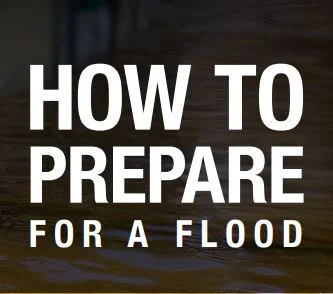The two main things you should know when it comes to flooding is that you cannot change the recurrence of its impact, but you can identify flood zones and the risks. The State of North Carolina provides its citizens with this website of flood zones as a public service: click graphic below for NC Flood Risk Information System
This site allows you to be specific in your search. You can look up areas by address, city, zip code or by county. This feature allows residents to better predict floods and prepare for the risks.
The Flood Risk Information System (FRIS) contains flood hazard data, models, maps, risk assessments and reports. It also provides geospatial base map data, imagery, LiDAR data, along with hydraulic and hydrologic models that are available for download and use. The North Carolina Floodplain Mapping Program has made every effort to ensure the accuracy of the information provided. Contact information for the North Carolina Floodplain Mapping Program is available at www.ncfloodmaps.com under the Contacts Menu or (919) 715-5711.
New Flood Maps are being adopted August 28, 2018
As a custom home builder, we take flood zones very seriously with understanding where they are located in our area and how they relate to building codes/standards, client/buyer hazard risks, and the sustainability of our clients' homes. We always takes the necessary steps in the siting, design, and construction of our properties that can reduce the risk. We want you to feel secure that we are building in areas that aren't in flood zones unless, of course, you build on one of the barrier islands.
When it comes to getting your family prepared for possible floods and keeping your house safe, talk with your insurance agent about a NFIP policy. Do not just assume your home will not be affected because it is not on the water.
"Do not expect a rate reduction without proper openings in foundation walls. Flood vents need to be sized and spaced correctly to get a proper rating. Any finished area at Base Elevation will be counted as the “lowest floor” which will relate into higher premiums. Getting an elevation certificate is a best practice because it has the square footage of the enclosed area, the number of flood openings within 1.0 foot above adjacent grade and the total net area of flood openings.”
– John K. Surigao, agent for Farm Bureau, for insurance-related questions call John (910) 754-8175.
KNOW THE DIFFERENCE!
A flood/flash flood WATCH means a flood or flash flood is possible.
A flood/flash flood WARNING = flooding or flash flooding is already occurring or will occur soon. TAKE IMMEDIATE PRECAUTIONS!
Learn more information on facts and fiction concerning floods as well as their disaster readiness plan for you and your family. Take a look at more information from this Red Cross graphic as well as their website by simply clicking the image below:
KEEP YOUR FAMILY SAFE BY TAKING THESE STEPS:
- Find out of you are located in a flood zone - use the helpful site map from the FRIS above
- Have a family meeting and discuss what your plan will be to keep the stress and anxiety down
- Have the necessary supplies needed in case power goes out such as a radio that only requires batteries, flashlights and candles
- Get together insurance policies, important family documents, and other valuables in a safe-deposit box nearby and in a place that is less likely to be damaged
- Keep the furry friends safe as well by having a plan for them
For more information, click below to go to FEMA's "How To Prepare For A Flood" site:







